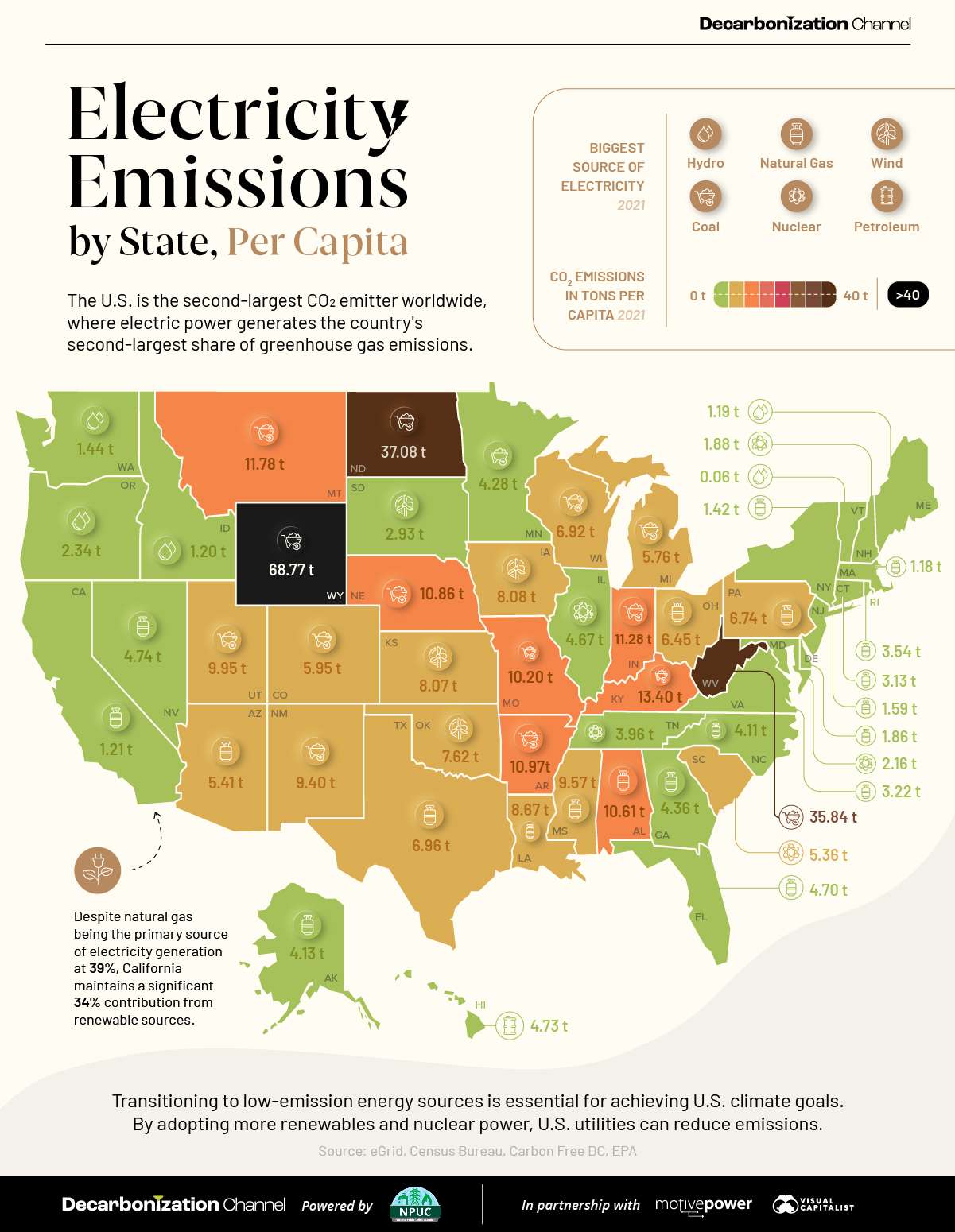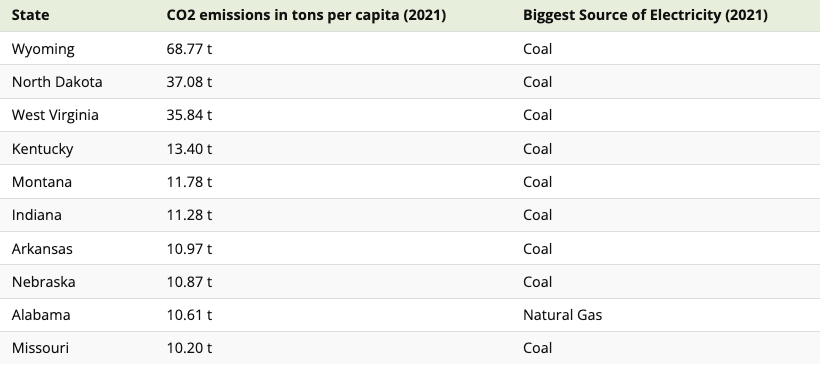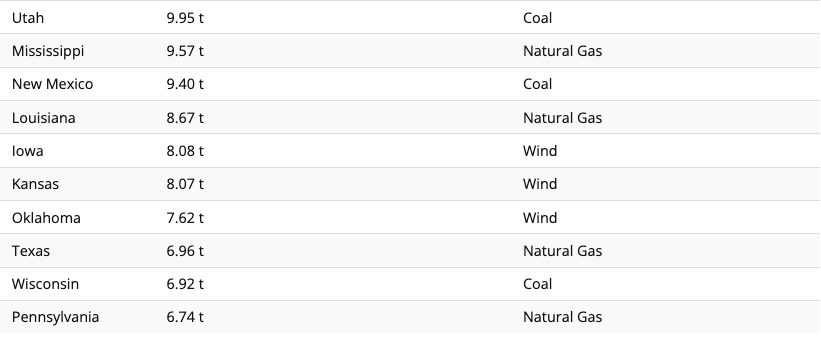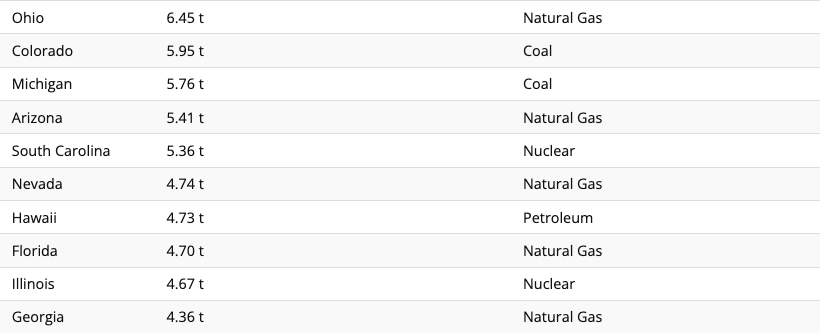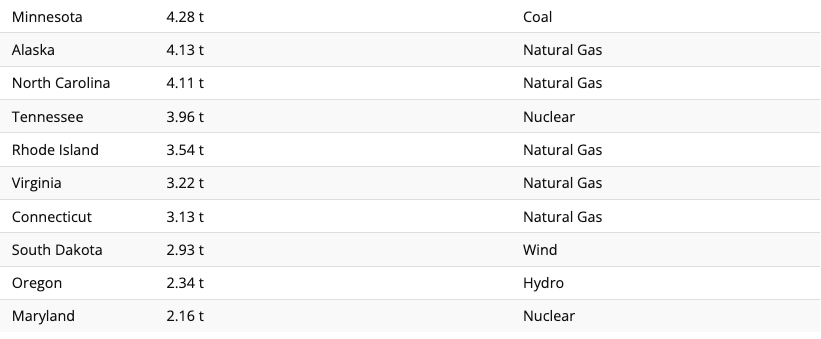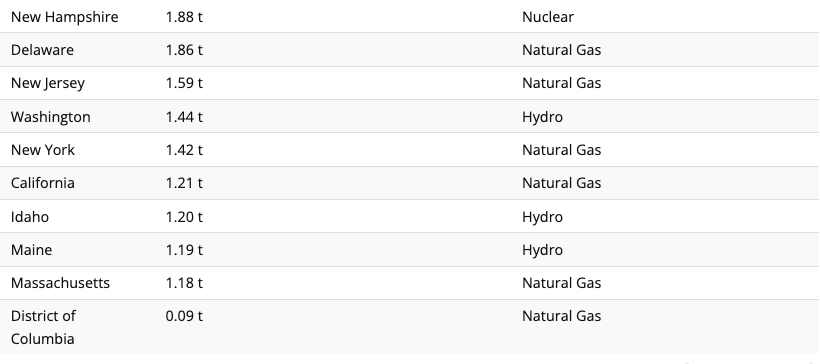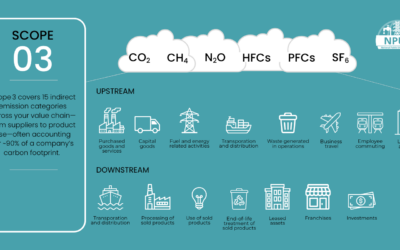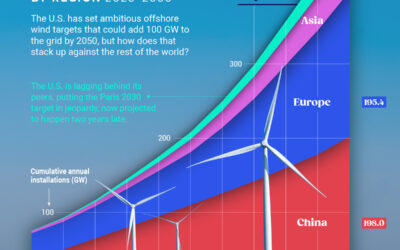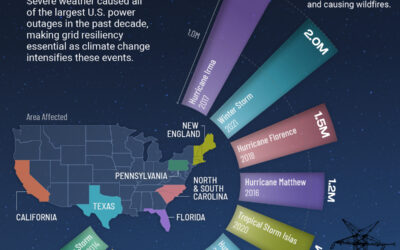Per Capita Electricity Emissions by State
The U.S. is the second-largest CO₂ emitter worldwide, with electric power contributing significantly to the country’s greenhouse gas (GHG) emissions.
In collaboration with the National Public Utilities Council, this graphic uses data from eGrid to showcase per-capita electricity emissions by state and each state’s largest source of power.
U.S. Power Sector: Second in CO₂ Emissions
According to the Global Carbon Atlas, the top three global polluters are China, the U.S., and India—accounting for half of the world’s CO₂ emissions.
The U.S., however, leads by far in terms of CO₂ emissions per capita, with 15.3 metric tons per person, while China and India have lower rates at 7.4 and 1.9, respectively.
A substantial portion of these emissions comes from electricity generation. According to the United States Environmental Protection Agency, the electric power sector is the second-largest source of U.S. greenhouse gas emissions, contributing 25% to the total.
Examining emissions per state, Wyoming, North Dakota, and West Virginia top the list of CO₂ emissions per capita, relying primarily on coal as their source of energy.
Here is a table showing emissions by state per capita, from highest to lowest:
Interestingly, from the top 10 on our list, only Alabama doesn’t have coal as the main source of electricity.
Conversely, four of the 10 states with the lowest CO₂ emissions per capita rely more heavily on renewables, especially hydropower.
Two of the largest consumers, California and Texas, have natural gas as their main source of electricity, but also maintain a significant share of renewable sources, with 34% and 44%, respectively.
Although coal accounted for 59% of CO₂ emissions from the energy sector, it represented only 23% of the electricity generated in the United States. Natural gas accounted for 37% of electricity generation in 2021.
The Transition to Low-Emission Sources
The U.S. has set a goal to reach 100% carbon pollution-free electricity by 2035.
Transitioning to low-emission energy sources like hydroelectricity, biomass, wind, and solar is essential for meeting U.S. climate goals.
In addition, clean energy stands out as the most significant job creator in America’s energy sector, with over 3 million Americans employed in clean energy jobs during 2021.
By embracing more renewables and nuclear power, U.S. utilities can reduce emissions and contribute to economic development.
Learn more about how electric utilities and the power sector can lead on the path toward decarbonization here.

